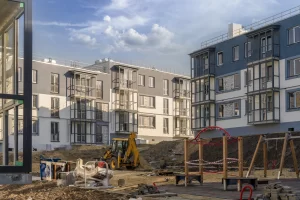What is a Capitalization Rate?
If you are just getting into real estate investing, the term capitalization rate (or cap rate) is one of the first things you will come across while looking at potential residential or commercial investments.
The Math Behind the Capitalization Rate
Calculating the capitalization rate of an investment property is a quick way to compare the expected rate of return you would be receiving. This will help you as an investor gauge whether or not the deal makes sense.
To calculate the cap rate you simply divide the Net Operating income by the current market value. In this case, the net operating income is the expected annual income generated by the property after all expenses incurred by the property. Depending on the property, these expenses will range from property taxes, maintenance, utilities (if paid by the owner), property managers, and insurance.
What is the Vacancy Rate?
As an investor, it is important to factor a vacancy rate into your expenses as well. Vacancy rates will vary depending on the building (commercial or residential) as well as where the property is located.
The principal and interest payments of a mortgage are not factored into the cap rate calculation. The current market value of the property is the present-day value of the asset as per market rates. There is no one answer for what is a good cap rate and what is a bad cap rate. The target cap rate largely depends on the area that you are investing in. Typically real estate investors are looking for a 5%+ cap rate. A higher cap rate usually indicates higher risk. Cap rates below 5% are typically lower-risk investments but will take longer to recoup the initial investment.
There are limitations
It is important to mention there are limits to the cap rate calculation, for example, the cap rate does not factor in the appreciation or depreciation of an asset. It will not factor in future cashflow improvements or limitations, or changes in the rental market (like the landlord tenet Board). These are important risks to factor in before making an investment.
Example:
Jim has inherited $1 000 000 and wants to invest the entire amount. He is comparing his options and sees that current GIC rates are at 3.5%. As an experienced investor, he knows that this is his safest option.
However, Jim sees a commercial property that he can purchase for $1 000 000. The current leases show a gross rent of $90 000. The total annual expenses for the building including vacancy rates are $30 000. This leaves Jim with a $60 000 annual return from his $1 000 000 investment (or a 6% Cap rate).
After weighing the risks associated with an investment property Jim decides to go for the higher return and purchases the building.






